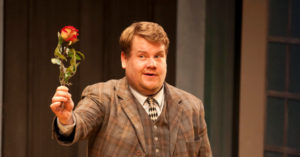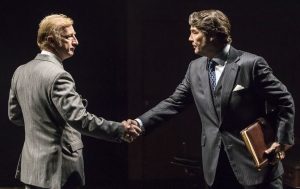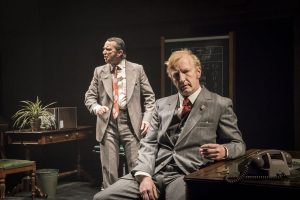Film fails to convey thrill of live theatre
★★★
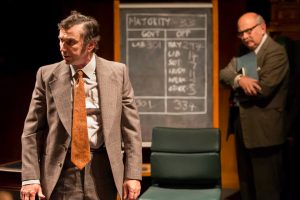
I’ve watched quite a few recordings of theatre shows since the Lockdown and the more I see the less sure I am that that they’re a good advertisement for theatre. By which I mean, what works on stage often doesn’t work on film.
At the heart of live performance, there’s a conspiracy between audience and actor. We all know we’re watching someone acting out a story. So we accept the artificiality, the theatricality if you like. That unnaturalness is exposed when we are forced to stand back from it and view it through the medium of film. So when the actors in This House race up and down the stage, it looks exciting in the flesh but on screen it just looks a bit silly. When actors speak loudly on stage, it’s riveting, on screen it’s a bit shouty.
Films and television dramas are more artificial than theatre but they do everything they can to make it seem like it’s real- the photographically detailed set, the convincing makeup and so on.
What we want in theatre is simply to watch those actors telling us that story with their words and actions. Film wants to show us flashbacks and dreams. It has to provide something to keep the eye interested: you can’t have a detective go question somebody without that person carrying on with their gardening or car repair.

We theatregoers want to use our imagination, just as we did when our parents or teacher told us a story as a child. We conjure up images of, as Shakespeare said, ‘the cloud-capp’d tow’rs, the gorgeous palaces’- not to mention pitched battles and shipwrecks. We don’t need imagination for film and TV drama because they do it for us. In This House, as the Labour Whips desperately try to get MPs back to give them the votes they need, a silhouette of a helicopter appears at the back of the stage, to great comic effect. That’s all we need. In a film, we would expect a real chopper.
Theatre is on a human scale (with the odd exception where the director insists that the production will be better for using video screens). We may like the odd spectacle but only because we can really appreciate a barricade built on a stage in front of our eyes. Generally, we like engaging with people who are not small and removed from us on a TV screen or larger than life in the cinema but people who are the same size as us, alive in front of us. For that reason, recorded theatre works best when following one character close up, like Fleabag or Sea Wall, or a small scale play dominated by one person like Cyprus Avenue.
Thrilling production from Jeremy Herrin and Rae Smith
When watching a live performance, our brains and eyes are remarkably good at seeing detail, even from a distance. On TV, we either view the whole set and miss the detail or the camera hones in on our behalf and creates its notion of what we should see. In theatre, we may be nudged by the script or the direction but we still make the choice to look at the person talking or the one listening or a detail of the set. Rae Smith’s set for This House is brilliant. She uses a traverse stage with green seats on either side creating both the sense of gladiatorial combat and the close intimacy of parliamentary politics. Not so great when you’re not one of the people sitting on one side looking at the other side.
So, no, I didn’t think the NTLive recording conveyed the quality of This House. It’s a superb piece of theatre deserving four or even five stars, reduced to maybe three at the most. What saves it is the wonderful script by James Graham and the great way it’s acted.
This House tells the story of the time in the 1970s when the Labour government was hanging on with small or nonexistent majorities. The play may be about politics which you might think boring but it is actually thrilling as the Labour whips tried to find the MPs’ votes to keep the government going and the Conservative whips tried to bring it down. And it’s funny, as when they drag in a dying member to vote.
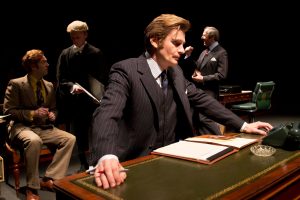
It’s also a very good explanation of how parliament works- and sometimes doesn’t work- and an advertisement for respect and compromise at a time when extreme positions are in danger of bringing down democracy.
Among many fine performances in Jeremy Herrin’s production at the National Theatre, I would pick out Charles Edwards and Reece Dinsdale as the ruthless but mutually respectful deputy whips, Phil Daniels as the conspiratorial cockney Chief Whip and Lauren O’Neill as the newcomer who grows in confidence and stature as the years go by.
I would definitely advise you to give it a watch, despite all my caveats, but I am glad I originally saw This House live on stage.
This House is streaming on the YouTube channel National Theatre At Home until 3 June 2020.
